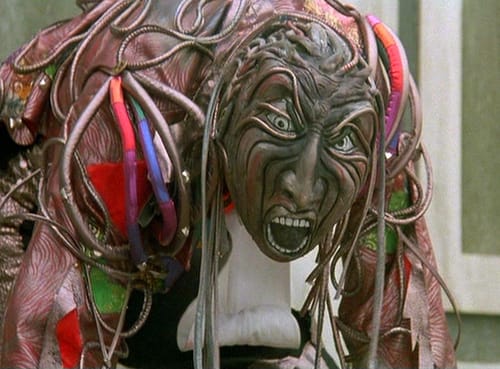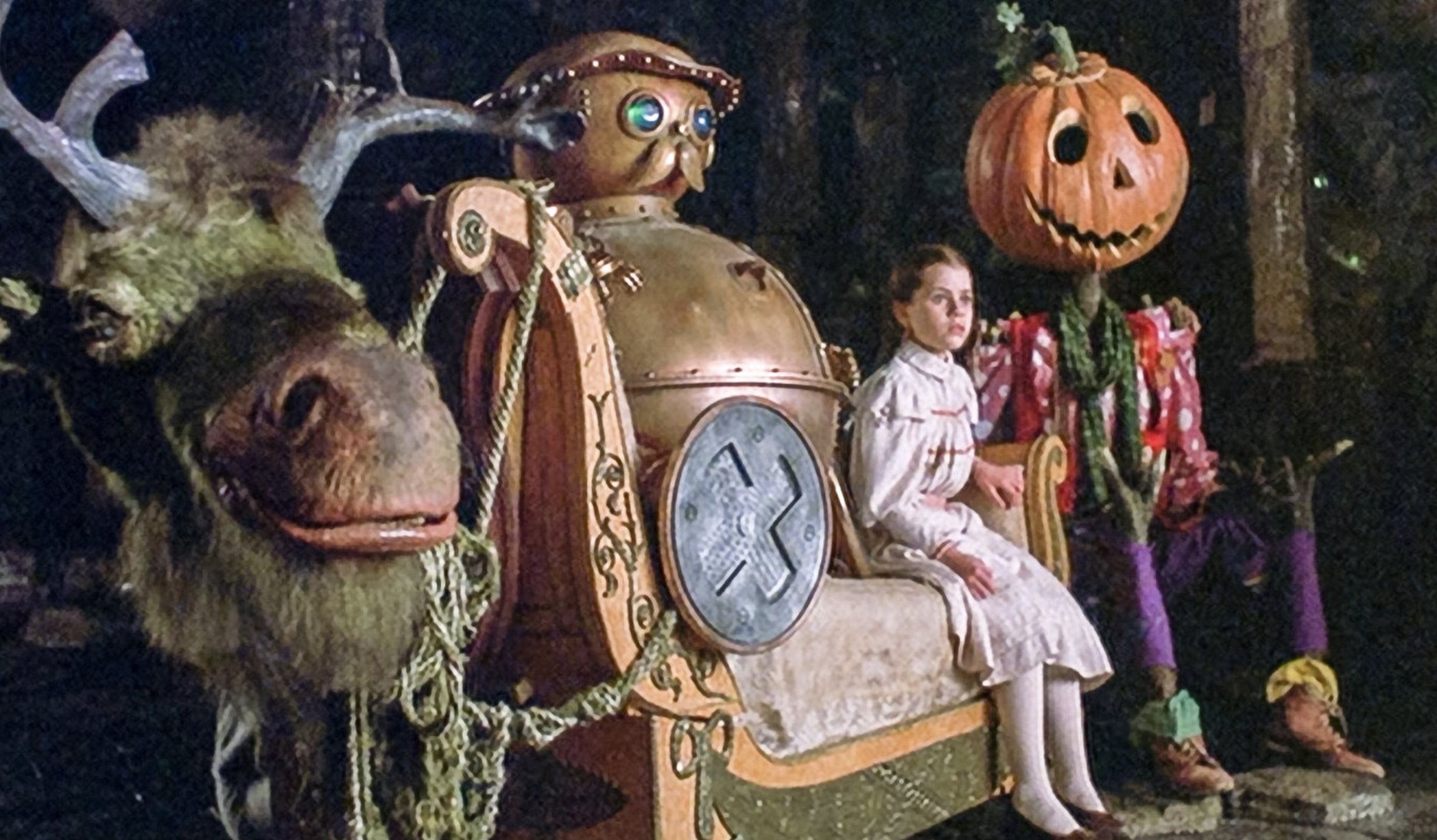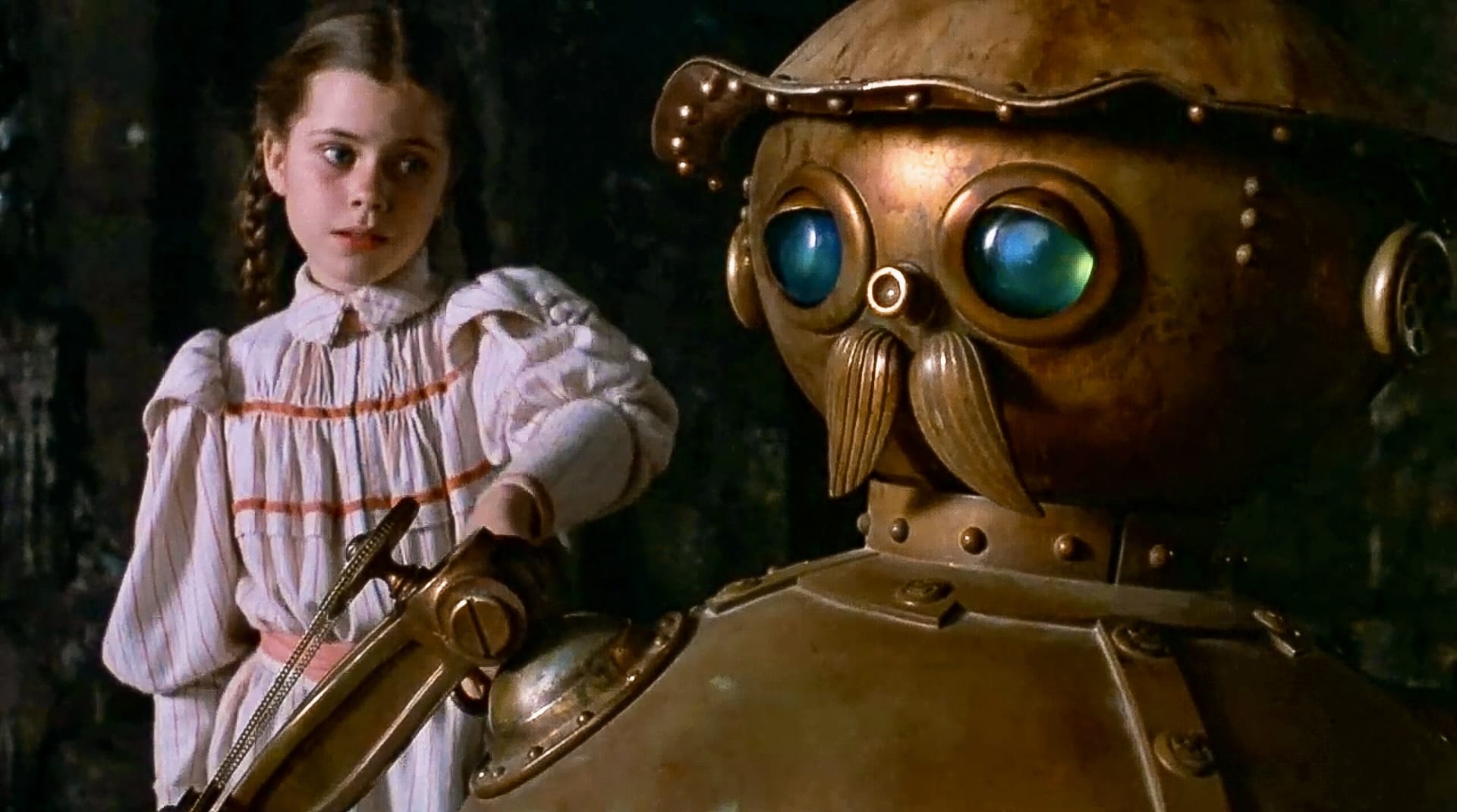OZMOSIS

"If you lose your imagination, you're like a hollow shell." - Fairuza Bulk (Dorothy)
Having recently watched the documentary 'Lynch/Oz' (2022) - all about the profound influence of the 1939 Victor Fleming film 'The Wizard Of Oz' on the life and work of director, David Lynch - I found myself remembering not so much the effect of that most iconic film on me but its far darker sequel, Disney's 'Return To Oz' from 1985, which to this day still lives rent free, like a residual, basement dwelling nightmare, in my subconscious.
The most disconcerting thing about the film compared to the technicolor extravaganza of the 1939 'Wizard', was that it seemed devoid of any real colour and almost naturalistic in the 'European' way it depicted both late 19th Century Kansas and the dilapidated city of Oz, now laid to ruin. All yellow brick roads and emerald cities are nothing but rubble and crumbled stone for much of 'Return' and any recall of past glories of that once sparkling wonderland are hidden or disguised.
But what was it exactly about this subdued sequel that disturbed the minds of children so effectively (or at least my disturbed mind)?
For me, it's the tangible sense of isolation and vulnerability of Dorothy (Fairuza Bulk) in both Kansas and Oz where the adult characters appear to want to either cure (by electrotherapy) or imprison her in either of those two worlds. Even the ramshackle coterie of characters she collects along the way throughout the film seem hilariously flimsy and vulnerable themselves. The painfully slow and mechanical Tik Tok, the perilously arranged Jack Pumpkinhead and the half couch/half elk, Gump, seem ill suited for conflict of any variety let alone battles with the terrifying Wheelers, Mombi or Gnome King. In a more typical action/adventure movie from the same era, you'd at least hope to find a rugged, atypical 'toxic' male hero type to depend upon - but here there are none to be found. Young Dorothy is the only one who can save both herself and Oz from being destroyed by using her unique wits and guile in this unsettling fever dream of fantasy and adventure.

Another key aspect of the dark genius of 'Return To Oz' is its more bleak portrayal of Dorothy (Fairuza Bulk) and her world in Kansas. Here, in her rural home, she is depicted as a depressed young girl who is struggling with troubled sleep. Nicol Williamson's Dr. Worley (inspired no doubt by Golding Bird) advocates electrotherapy to zap the "unpleasant dreams" from Dorothy's disturbed mind and Auntie Em (Piper Laurie) and Uncle Henry (Matt Clark) appear to comply at first with his unorthodox, progressive methods. Set in the year 1899, on the cusp of a new century, it's clear that the arrival of a new age is just around the corner and all the heaven and hell that will entail.

Reflections in mirrors of Ozma (Emma Ridley) - an imprisoned Princess of Oz - also appear to Dorothy often throughout the movie, guiding her from Kansas back to the land of Oz. It has been suggested by some that Ozma is a projection of Dorothy's split personality and if so, we might well see Dorothy's mental disorder as the reason she is able to switch between the two worlds of Kansas and Oz so easily where others (i.e adults) are not.
The same doubling up of characters in the reality of Kansas and the 'fantasy' of Oz occurs in 'Return' in some ways even more effectively than the 1939 film. The electromagnetic machine that is about to be used on Dorothy resembles Tik Tok; Nurse Wilson is later replicated in witchy form as the terrifying Mombi and Dr. Worley becomes the Gnome King who has spies watching in every square inch of the once magical land of Oz. What makes this doppelgänger effect more throughly spooky and oppressive in 'Return' is that the distinction between the threat in Kansas and the threat in Oz are not that so fantastically far apart.
It has to be said the art direction (Fred Hole) and production design (Norman Reynolds) throughout the 1985 film is phenomenal and remains consistent in maintaining a tone of eerie abandonment with Oz's washed out exteriors of stone; eerie, lonely palaces filled with endless mirrors and craggy, inhospitable environments where it appears impossible for our heroine to rest for one moment - the only time she gets to sleep is flying high above the deadly desert on the flying Gump with his ropey, chaise lounge attachment.
Strangely, it was George Lucas (creator of 'Star Wars') who saved director Walter Murch from being fired by Disney early on after they'd strongly disapproved of the initial rushes of 'Return' from the film's shoot. Lucas made a promise to the Disney board that if Murch (a close friend and collaborator) failed to deliver the film on time, he would personally guarantee that he would finish the production himself. It's perhaps no coincidence that Lucas, having taken a turn for the dark in the middle instalment of his original Star Wars trilogy, had an instinct for managing strong, thematic issues in films aimed at younger audiences. It should go without saying, of course, that both Luke Skywalker and Dorothy share similar paths to achieving their story goals and both find themselves with a disparate entourage of characters to join them in their respective adventures in both outer space and the land of Oz.

Looking back as an adult, I now find the ultimate power of the 1985 film is in the absence of what existed before: not just the memory of the 1939 film but the actual absence of Oz (mostly destroyed) through much of the story. Narratively it is Dorothy who now has to return Oz to its former grandeur but also symbolically the autonomy of her own mind and body with both very much being equally under threat from sinister forces. In this sense Oz is very much a metaphor for Dorothy's own precious imagination. Perhaps it was the electrotherapy idea that scared me as a young boy, the thought that one might have to control one's thought via an intervention of so-called experts - probably every creative person's worst nightmare. This is a re-occuring theme explored in great 20th Century novels such as Orwell's '1984', Huxley's 'Brave New World' and Bradbury's 'Fahrenheit 451' as well as in Baum's 'Oz' series. It's safe to assume that the acceleration of the industrial age had led to a sort of existential shadow in society and art, not dissimilar to the one we humans now face with the constant and rapid advancement of technology.
Certainly, as kids films go, 'Return To Oz' is one of the darker, more psychologically disturbing ones from the 1980s, though not dissimilar, however, to the great tradition of European fairytales that routinely balance the light with the dark which George Lucas also famously drew on for 'Star Wars' via his reading of Joseph Campbell's 'The Hero With A Thousand Faces.'
When Oz is finally restored at the end of the movie and Dorothy wakes back up in the muddy fields of Kansas, all those who posed a threat to her in her real world are either dead or being punished by the law and her equilibrium in both realms has been truly restored. One might conclude then that until our interior world is resolved our exterior world may not be. In this sense, 'Return To Oz', like 'Groundhog Day', is a classic Jungian parable. Jung believed that our inner conflicts can only be resolved by allowing our repressed thoughts to reach our conscious mind.
"Until you make the unconscious conscious, it will direct your life and you will call it fate." - Carl Jung
What might have been destroyed in Dorothy's mind by Dr. Worley and his machines is the very thing that saves her, her family and the world of Oz ...
Imagination, and the ability to dream.